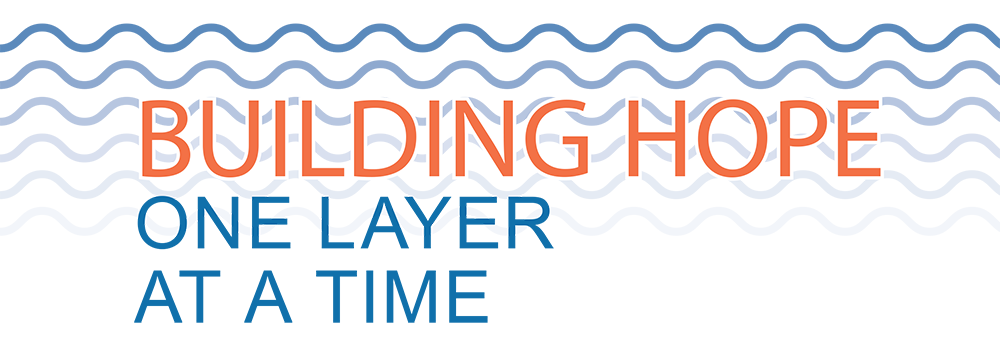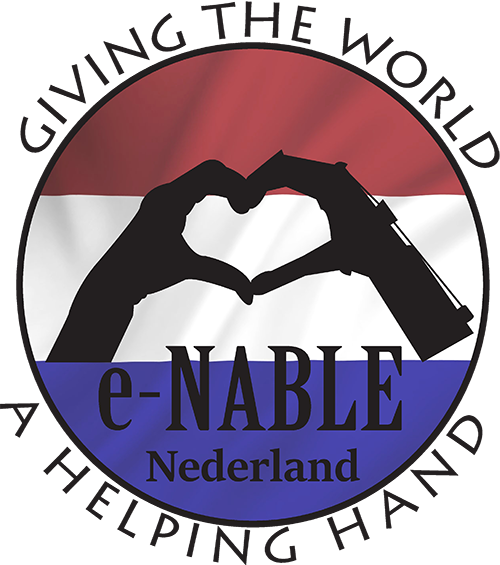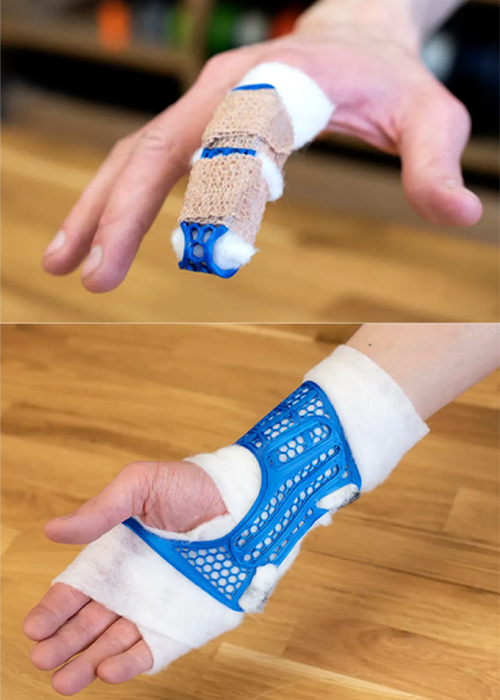
In the face of global challenges, cutting-edge technologies are providing an alternative pathway for communities to help others around the world. Additive manufacturing (AM), also referred to as 3D printing, is revolutionising humanitarian aid by enabling a quick production of goods such as arm braces, low-cost prosthetics, and support tools for medical staff. As a technology that has entered many households around the Netherlands, a big community is ready to start printing to help those in need.
Through non-profit organisations, as e-NABLE Nederland and MAKERS4ALL, the community can be organised to provide the best support possible to those in need. Thus, unleashing the power of AM for the good of all.
Beyond the Borders

e-NABLE Nederland is a Dutch foundation working to facilitate access to 3D-printed hands or arms, at a low cost, for those wanting to gain or improve grip function caused by an upper limb difference. Through their network of volunteers, and individual collaboration with every person, prostheses are customised in size and colours, printed, and assembled with the beneficiary. Their impact reaches not only children and adults in the Netherlands, but also the Dutch speaking part of Belgium, and since 1,5 years also the Tigray area in Ethiopia through the collaboration with DEKNA foundation.
![]()
MAKERS4ALL is a foundation that came to action during the COVID-19 pandemic to support healthcare workers by 3D-printing frames for face shields and clips for face masks. These small, yet impactful, printed parts helped people all over the country by reducing their exposure to the virus as they were dealing with medical supply shortages. Due to the development and availability of 3D printers nowadays, the MAKERS4ALL network printed over 100.000 items during the starting years of the pandemic.
In recent years, both foundations have supplied printed items for crisis relief in Ukraine. The community has been printing light-weight designs that can be easily adapted for finger and wrist braces, additionally they have printed parts for making tourniquets. The efforts from both organisations, along with the extensive community, have showcased the impact of 3D printing for humanitarian support by delivering 8.500 braces for wounded Ukrainians.
Barriers to overcome
Advances in additive manufacturing have made this technology accessible for non-industrial consumers through affordable equipment, user-friendly software, and easy access to material; specially for FDM (fused deposition modelling) printers. These advances have benefitted users from hobbyists to engineers as newer printer models allow for faster printing with better quality. This allows the 3D printing community, involved in e-NABLE Nederland and MAKERS4ALL, to deliver more printed items during crisis situations. These organisations have faced various challenges and over the years some lessons have been learned about 3D printing and building a network:
One poor print will break their trust
It is important to clearly communicate the expected print quality with every volunteer as they may have different printers, materials, and parameters for working. Reducing the amount of faulty prints will contribute, besides a better use of resources, to only deliver parts of the best quality. Any faulty prints will affect the medical staff’s perception of the reliability of 3D printed components and in a crisis context with high numbers of injuries, printed parts need to be of the best quality from the start or you don’t get a second opportunity.
With different materials there is a different number of volunteers
To ensure good quality components that will perform as desired, different materials may need to be used for producing the range of products. Unfortunately, every volunteer has different abilities in which materials he or she is able to print which can limit how many parts could actually be printed. Having to print components in PLA raised no issues, when a piece required to be printed using PETG the number of volunteers available would drastically reduce, and numbers would be even lower for any other material.
Faster printing does not secure a bigger outreach
Finding the right collaborators is essential to deliver the goods to where they are needed. For Ukraine, delivering the braces was achieved through small foundations who were already working in specific areas within the country, thus reaching a limited number of injured people. Big foundations, with bigger outreach, are hesitant on embracing 3D printed components that have not been thoroughly tested or approved by healthcare organisations. Therefore limiting the impact of printed goods during times of crisis even when resources are available.
Delivering help needs an additional community
For e-NABLE’s work in Tigray, providing the prosthesis further relies on the community support from those already traveling between the Netherlands and Ethiopia. These unique volunteers support with collecting measurements or taking the printed parts with them to deliver at the hospital. Without this extended network, it would not be possible to deliver as many prostheses to the kids and adults in need living in Tigray.
Volunteers’ motivation is not constant
Having been closely impacted by the COVID pandemic, volunteers were eager to help those around them and the struggling medical staff throughout the country. For other projects, it is essential to emphasise on the importance of the volunteers’ efforts and the impact their participation can have, despite how distant the crisis is located.

Top. Child with arm prosthetic through e-NABLE Nederland.
Middle. Wrist braces being used in Ukraine.
Bottom. Face shield printed and delivered during COVID pandemic
Conclusion
Building a community of volunteers is as important as having faster printers available. Being able to put AM technology into action at people’s home has brought multiple benefits, one of them is having a big community to reach out for support, as seen through the work by e-NABLE Nederland and MAKERS4ALL. These organisations look forward to the next advancements in 3D printing to help more children and adults with prostheses and continuing to support humanitarian efforts where needed.

Finger and wrist braces from e-NABLE and MAKERS4ALL.
